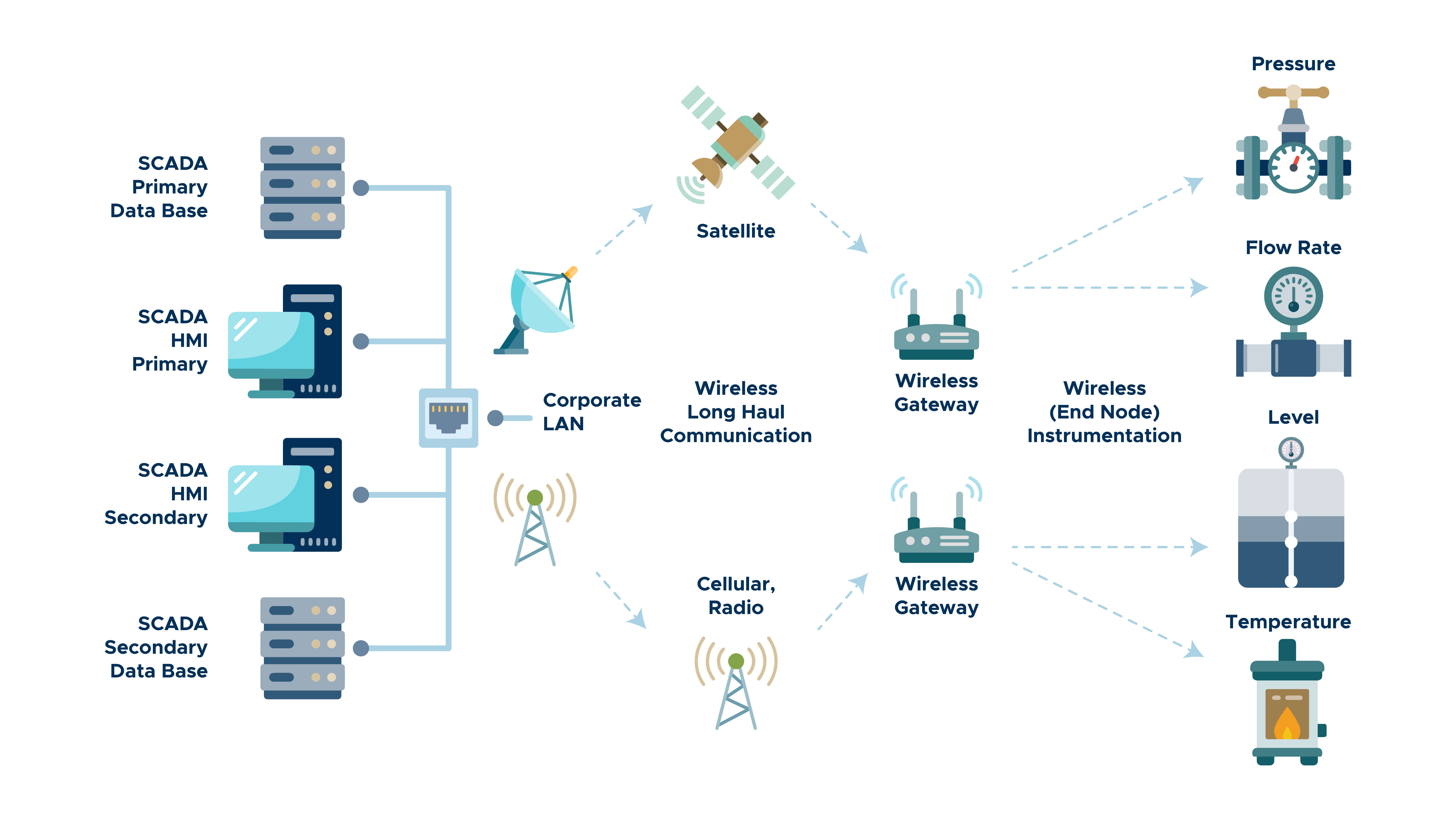
SCADA in 2023
- Published
- May 25, 2023
- Share
SCADA Origins
Prior to the 1950s, industrial organizations responsible for critical societal functions such as wastewater systems, oil and gas, transit and manufacturing employed manual monitoring of control equipment using analog push-button boards and modules. However, with the advent of computers and computer-based systems capable of automating industrial processes, the need for manual attention diminished. This is where SCADA systems (supervisory control and data acquisition) can be leveraged in order to automate industrial processes by integrating hardware, analogical equipment and software on a computer system.
SCADA is an industrial control system that enables automated communication between various components, including programmable logical controllers (“PLCs”), human machine interfaces (“HMIs”), and remote terminal units (“RTUs”). The diagram below* is an example of how SCADA can be implemented. Originally developed in the 1950s for telephone relay systems and minicomputers, SCADA was designed to streamline communication between the network and multiple remote terminal units, eliminating the need for manual connection to every terminal. The “control” part of SCADA is the manual operation of remote devices, such as pump and compressor motors, instrumentation or other remote-control loops, opening or closing valves and the selection of switch settings for substations. In all cases, the system validates the present status of the device being operated, reports it on the SCADA HMI and allows the operator to check that status before operating it.

Over time, SCADA has undergone significant advancements and now features cloud-based architecture, utilizing the internet to enhance system redundancy. As a result, SCADA has proven to be an invaluable asset in modern industrial applications, such as transportation of natural resources, traffic lights and core manufacturing and distribution processes, providing seamless communication and control over complex systems.
SCADA in 2023 and Who Should Care
Control and data acquisition systems have become a staple in the manufacturing and distribution, energy, and automotive industries. Granting business managers and executives the ability to monitor, control and report on the happenings of their systems, SCADA has opened many doors into the future. In a traditionally manual market, SCADA allows for technology enablement by granting key decisionmakers not only the ability to collect, monitor and analyze real time data, thus reducing downtime and energy costs, but also to drive process improvement by allowing the proper personnel to control equipment and factory processes remotely. Emerging trends for SCADA include the following:
- Subscription/flex licensing
- High-performance HMI
- Alarm software
- High-performance process historian
- Cellular and 5G
- Virtualization
Security Concerns Surrounding SCADA
Along with all the efficiencies, cost reduction and gains in productivity that advancements in SCADA technology provide organizations come risks and vulnerabilities. Many of these relate directly to security administration. This illuminates the importance of governance over the entire SCADA network, because data provided and managed by these critical systems is vital in the organization's decision-making process through reporting, forecasting and projections. As SCADA is upgraded using emerging technologies to improve operations, it becomes inherently more exposed to the same threats and vulnerabilities faced by these technologies.
The impact of SCADA and IoT (the internet of things) is evident when looking at situations such as the February 2021 cybersecurity attack on a Florida water treatment plant. Hackers were able to access the Industrial Control Systems platform, manipulating the chemical levels in the water and rendering it unsafe to consume. This was a result of lack of controls surrounding the ICS platform. To protect against actions of this nature, companies must properly secure their SCADA systems based on technologies being used.
With Great Opportunity Comes Great Need for Protection
SCADA has become commonplace in a majority of the industries that consumers deem vital. This is no surprise, as it revolutionized how efficiency and operations were viewed as a whole and has become the industry standard. Best practices for securing your SCADA systems will be discussed in the next installment of our SCADA series.
*Thanks to upkeep.com.
What's on Your Mind?
Start a conversation with Gaini
Receive the latest business insights, analysis, and perspectives from EisnerAmper professionals.











